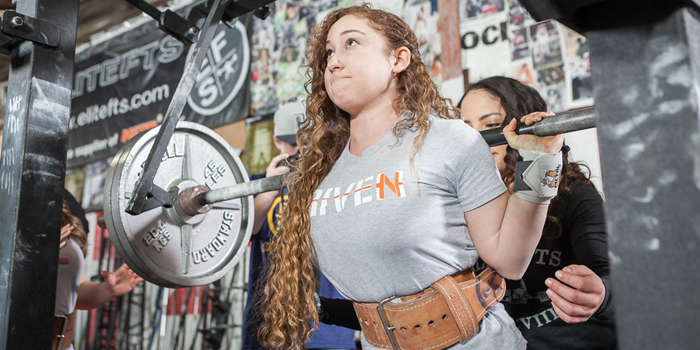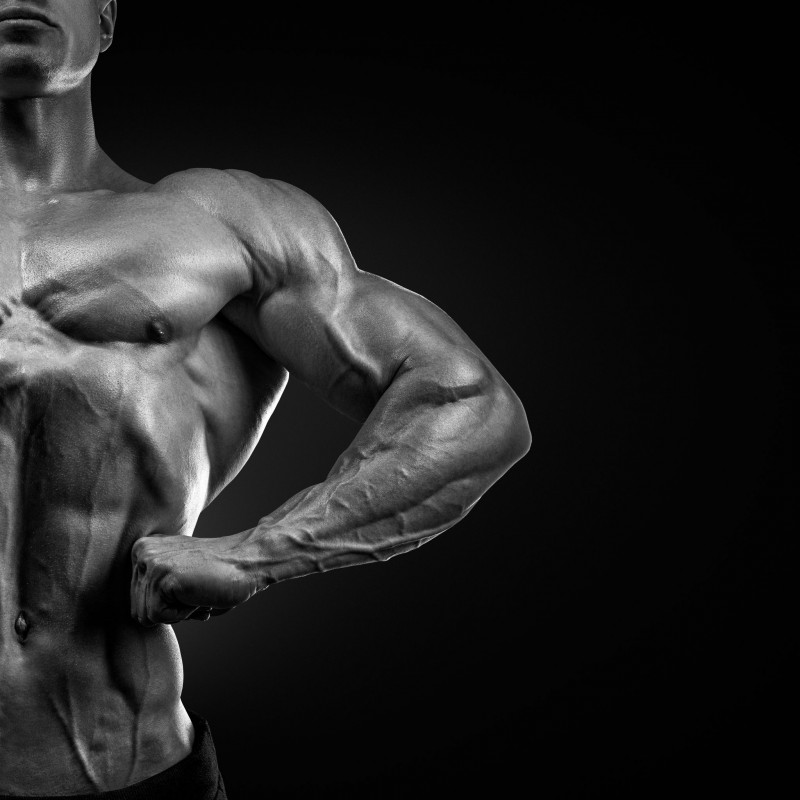
If you are reading elitefts.com and ended up at this article, there is a good chance you are searching for knowledge to understand how muscles grow. I won’t lie to you; the fundamental molecular basis underlying muscle growth is complicated. And, since research has shown that acute increases in systemic hormones are not required (or even needed) for muscle hypertrophy1-3, the purpose of this article is to talk about the non-hormonal drivers of muscle hypertrophy without overcomplicating things.
Muscle Damage: The Hypertrophic Activator
When you lift, the weight you move puts mechanical tension on the muscle membrane, which subsequently causes micro-damage to the muscle fibers and metabolic stress. This damage wakes up some of the dormant (quiescent) stem cells located outside of the muscle fibers that make up your muscles. The awoken stem cells then either return to their sleeping state or morph (differentiate) into cells called myoblasts, which then expand in number (proliferate) and traffic to the sites of muscle fiber damage.
WATCH: How Much Protein Do You Really Need to Build Muscle?
Once at the site of damage, these cells then merge (fuse) to one another and the injured fiber4. This fusion of the myoblasts to the injured fiber is what makes the muscle acquire more nuclei (the part of the cell with DNA). The acquisition of more myonuclei increases the muscle fiber’s capacity to make more contractile proteins (actin, myosin), and consequently, results in increases in muscle cross-sectional area (hypertrophy)5-7. So basically, the whole idea that a high training volume is great for hypertrophy comes from the thought that increasing mechanical loading will increase the overload/damage induced hypertrophic response (disclaimer: excessive volume without recovery can cause muscle atrophy8).
Stress That Isn’t Completely Catabolic: Lifting-Induced Metabolic Stress
When you get some training-induced damage, and muscle protein synthesis exceeds muscle protein breakdown, you pretty much are primed to get increases in muscle hypertrophy. The net protein accretion that occurs in response to training is partly driven by metabolic stress induced by training. What is metabolic stress, you ask? Well, when you train, your contracting muscles rely heavily on anaerobic metabolism to drive energy (ATP) production. Anaerobic metabolism is a great way to get energy fast since it doesn't require oxygen to make ATP. However, when your anaerobic metabolism is cranking, metabolites like creatine, lactate, and hydrogen ions start to build up in the muscle. These metabolites can activate things like cell swelling, reactive oxygen species production, and myogenic gene programs that are important for mediating the hypertrophic responses to training9.
Different Stimuli, Different Results: The Types of Muscle Hypertrophy
Hypertrophy is the process of increasing the cross-sectional area of a muscle fiber. Unlike muscle hyperplasia, which is an increase in the number of fibers within a muscle, hypertrophy is achieved by either increasing the contractile elements of a fiber or its extracellular matrix and sarcoplasmic proteins9. Refresher: Mature muscle cells (fibers) are the things that make up your muscles. They are tube-like cells composed of many nuclei that are typically located on the periphery. Each muscle cell contains a jelly-like matrix called a sarcoplasm that holds organelles in place (organelles are things like energy-making mitochondria and protein-synthesizing ribosomes). Hypertrophy can be divided into contractile hypertrophy and sarcoplasmic hypertrophy. Contractile hypertrophy is the process of adding sarcomeres in series or in parallel (most common) within the muscle fiber. Thus, when the muscle undergoes overload-induced damage via moving weights, the muscle damage induces a cascade of events (described above) that promote contractile hypertrophy via increasing the amount of myofibrillar contractile proteins and number of sarcomeres in parallel. On the other hand, sarcoplasmic hypertrophy is the process of increasing the non-contractile proteins and fluid within the muscle fiber. This can occur when training causes increases in things like the muscle fiber’s connective tissue, glycogen, and sarcoplasmic content.
The "Who Cares About Hormones Hypertrophy" Summary
Lifting-induced damage to the muscle drives muscle hypertrophy by activating muscle stem cells and their process of differentiating into muscle cells that can fuse to—and patch up—injured muscles. When this regeneration/repair process is combined with increases in net muscle protein synthesis, increases in muscle cross-sectional area (hypertrophy) often result. So, get out there, lift enough to cause some micro-muscle damage, and make sure you don’t do a bunch of catabolic things after. If you follow those simple steps, you might just get jacked without having to worry about manipulating all those complicated hormones.
References
- West, D.W. et al. Elevations in ostensibly anabolic hormones with resistance exercise enhance neither training-induced muscle hypertrophy nor strength of the elbow flexors. Journal of applied physiology 108, 60-67 (2010).
- Spangenburg, E.E., Le Roith, D., Ward, C.W. & Bodine, S.C. A functional insulin-like growth factor receptor is not necessary for load-induced skeletal muscle hypertrophy. The Journal of physiology 586, 283-291 (2008).
- Hornberger, T.A. et al. Mechanical stimuli regulate rapamycin-sensitive signaling by a phosphoinositide 3-kinase-, protein kinase B- and growth factor-independent mechanism. The Biochemical journal 380, 795-804 (2004).
- Charge, S.B. & Rudnicki, M.A. Cellular and molecular regulation of muscle regeneration. Physiological reviews 84, 209-238 (2004).
- Petrella, J.K., Kim, J.S., Cross, J.M., Kosek, D.J. & Bamman, M.M. Efficacy of myonuclear addition may explain differential myofiber growth among resistance-trained young and older men and women. American journal of physiology. Endocrinology and metabolism 291, E937-946 (2006).
- Roy, R.R., Monke, S.R., Allen, D.L. & Edgerton, V.R. Modulation of myonuclear number in functionally overloaded and exercised rat plantaris fibers. Journal of applied physiology 87, 634-642 (1999).
- Allen, D.L., Monke, S.R., Talmadge, R.J., Roy, R.R. & Edgerton, V.R. Plasticity of myonuclear number in hypertrophied and atrophied mammalian skeletal muscle fibers. Journal of applied physiology 78, 1969-1976 (1995).
- De Souza, R.W. et al. High-intensity resistance training with insufficient recovery time between bouts induce atrophy and alterations in myosin heavy chain content in rat skeletal muscle. Anatomical record 294, 1393-1400 (2011).
- Schoenfeld, B.J. The mechanisms of muscle hypertrophy and their application to resistance training. Journal of strength and conditioning research 24, 2857-2872 (2010).
Image courtesy of improvisor © 123RF.com











